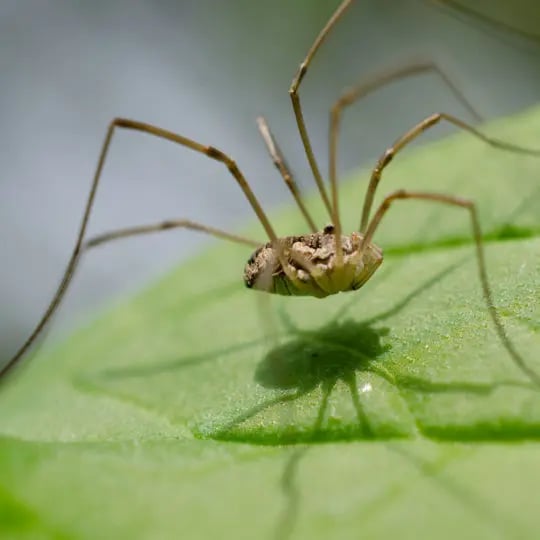
Scientific Name: Aranae – Multiple Types
Lifespan: Varies – Several months to 15 years.
Problem: Venomous bites that may be painful, possibly dangerous.
While the few house spiders bite willingly, and will consume insects that do like to bite you (such as fleas and mosquitoes), spiders create webs in hard-to-reach corners and, when they do bite, leave large, itchy and often painful bumps. Additionally, if you are not careful, the spider that bites you may be one of the more dangerous, poisonous varieties, such as a black widow or brown recluse.
Common Spiders on the East Coast
- House Spider
- Giant House Spider
- Black Widow Spider
- Wolf Spider
- Yellow Garden Spider
The Spider Life Cycle
All spiders have their own different life cycles, lay different numbers of eggs, and even have different webs. The following represents the life cycle of the common house spider:
- Eggs – Common house spiders generally lay only about 250 eggs at a time. The eggs are contained within egg sacs spun from spider silk, which are generally tear-drop shaped and white or light brown. The egg sacs are hidden in the spider’s web, attached by silk to a stable surface, or carried by the female spider in her spinnerets.
- Juveniles – While insects often take the form of larvae in their juvenile stage, spiders experience this stage within their egg sacs and emerge within 10 days as tiny and often pale copies of their parents. A male house spider takes 30-80 days and 4-6 moltings to mature, while a female takes 40-100 days and 5-7 moltings.
- Mature Bugs – When fully grown, the common house spider is yellowish-brown with a lighter abdomen speckled with black, 5-8 mm in length.
- Lifespan – House spiders live for about 1 year, though if they survive the winter they can live for up to 2. Young spiders will feed on one another if no other food is available, and depending on the type, most arachnids can live anywhere from a week to a year without food.
Some spiders live only a few months. Others can live several years. Some are aggressive – but most, including the black widow, will only bite if they feel an immediate threat.
Spider Habitats and Habits
Spiders are fond of dark, enclosed spaces where they can build traps for their prey and lay eggs without being disturbed. Dark corners and wood-based materials such as cardboard boxes hold special appeal for spiders.
They do not feed on humans and will not seek to bite you, preferring to sustain themselves by eating the bugs that they catch in their webs. When threatened, some spiders will flee, some will bite, and some will try other protection methods. The common house spider, for example, will usually play dead so as not to be attacked. Bites occur only when the spider is already standing on you when it believes it is about to be crushed.
How to Recognize and Get Rid of Spider Infestations
Spider infestations are easy to spot—they are usually accompanied by numerous webs and large numbers of baby spiders roaming the walls, ceilings and floors of your house.
To get rid of spiders, vacuum frequently to pick up webs and the dead bugs that may be attracting spiders, and keep your bed and sheets away from the floor and walls to prevent spiders from wandering across while you sleep. In addition, a spray of eucalyptus oil combined with water can be an effective spider repellent.
Need Help with Learn All About Spiders | Green Pest Solutions?
Call today at and let's talk about how we can help you with Learn All About Spiders | Green Pest Solutions and other Pest Library.